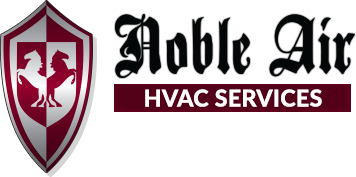Keeping a commercial space comfortable in Phoenix can be quite expensive and there are a number of options for cooling and heating. One of the most efficient is the VRF HVAC system, or a variable refrigerant flow heating and cooling system. Invented in Japan over thirty years ago in 1982, it works much like mini split units, heating and cooling with refrigerant. The refrigerant is circulated through the system, conditioned by a single outdoor condensing unit, and is broadcast into a building by multiple FCU’s, or, fan-coil units.
What is a Commercial VRF HVAC System?
VRF systems are not operated by on/off switches, but instead, works at varying speeds, which serves to lessen energy load conditions, saving approximately 55 percent compared to traditional HVAC units. These systems typically include an air conditioner inverter and vary both motor speed and refrigerant flow, according to needed comfort conditions. These are popular choices for commercial spaces because they provide a great level of climate control by a building’s occupants.
VRF systems are enhanced versions of ductless multi-split systems, permitting more indoor units to be connected to each outdoor unit and providing additional features such as simultaneous heating and cooling and heat recovery. VRF heat pump systems permit heating in all of the indoor units, or cooling of the all the units, not simultaneous heating and cooling. —American Council for an Energy-Efficient Economy
These systems can simultaneously change temperatures in different rooms within a building. Variable refrigerant flow systems are largely automatic in operation, and, only the main control panel needs to be set at the ideal room temperature. Such systems are very well adaptive for large commercial spaces, because the technology is designed to keep temperatures comfortable, especially in buildings where such regulation is vital. There are several benefits of having a commercial VRF HVAC system installed in a building, which include:
- Consistent comfort delivery. VRF technology is an advanced one, and it provides consistent comfort by varying refrigerant flow to multiple indoor units, based on need. There is little to no fluctuation in room temperature as a result of varying the flow of refrigerant.
- Minimal ductwork is needed. One of the more impressive aspects of a commercial VRF HVAC system is that these are designed to minimize ductwork, which means that installation is quicker and less disruptive. It also reduces maintenance costs said ductwork, as well as lowering the cost of replacement.
- Ideal for zoning and varying loads. In commercial buildings where zoning, or, differing temperatures are needed in different areas or rooms, VRF technology works exceptionally. This is especially helpful for commercial applications where conditions are sensitive to temperature.
- Quiet operation. These systems are also quiet, with inside units operating at low noise levels, as well as outdoor units that also operate at a low volume. This quiet operation is ideal for large office environments, where noise is disruptive.
To learn more about commercial variable refrigerant flow heating and cooling systems, give us a call at 480-659-6497, or, click over to our commercial services page.

